This post is taken from the most recent 2024-25 Annual Bulletin.
Join the discussion
The article generated some discussion amongst AOA members.
It is reproduced here with some of those comments with the hope of encouraging a wider discussion and more ideas.
Through the years there have been many ideas for how the Atalanta might be devel- oped. The idea of building in fibreglass has come up many times and there was even a poll of members for interest the idea (see the 1984-85 Bulletin). The idea has many attractions; all the amazing features of the Atalanta without any of the maintenance.
Owners have put other ideas into practice. For example twin rudders (A102, A146), vertically lifting rudders (A15, A45, A87, A89, A132, A138, A146, A166, A177, T4), raising the aft deck to increase comfort in the aft cabin (A15), removal of the aft deck to make a second cockpit for fishing (A8), fixed bilge keels instead of lifting (A170, A31-12).

But a theme which has always captured my imagination has been ‘enhancing’ the rig. Some have tried larger sails, slightly taller masts and A80 sailed with a gunter rig.
Other ideas have included bowsprits and Code Zeros, reducing weight aloft using carbon fibre spars and Dyneema standing and running rigging. And Mike Dixon and I have often mused about fitting a gaff rig; not just for performance but for character and, yes, because it would be an interesting challenge.
So at the beginning of April last year I asked the folks in the Fairey Atalanta Experimental Research Yurt to take a look. What follows is a product of their imagination. The ideas are not official AOA guidance. Please don’t try this at home with- out a responsible boatyard present.


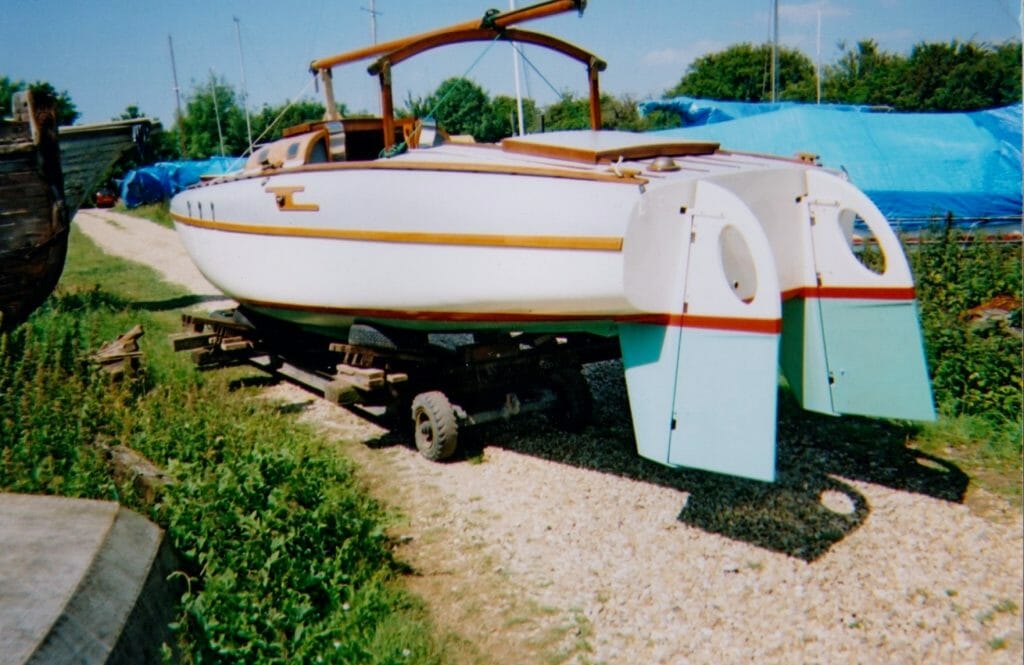
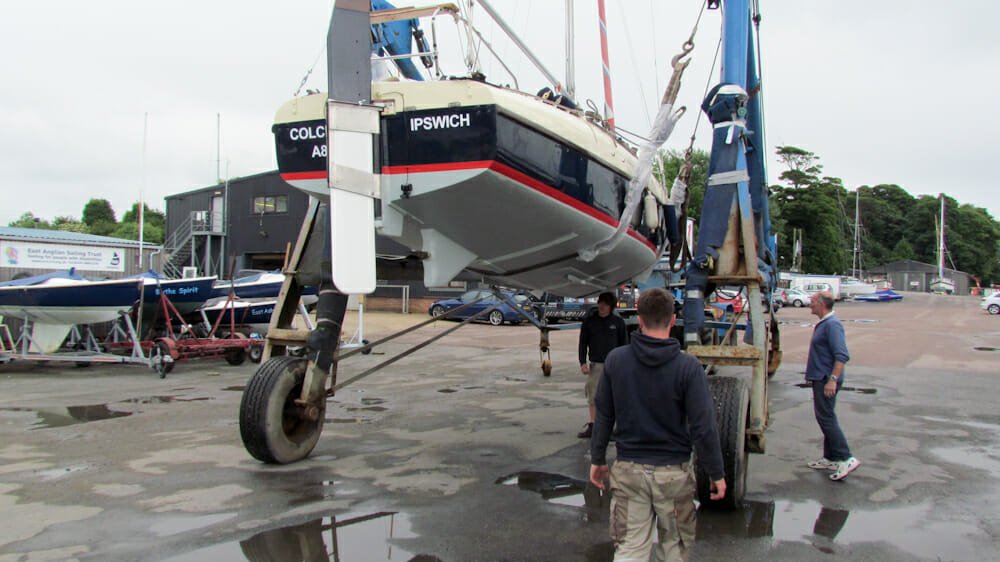

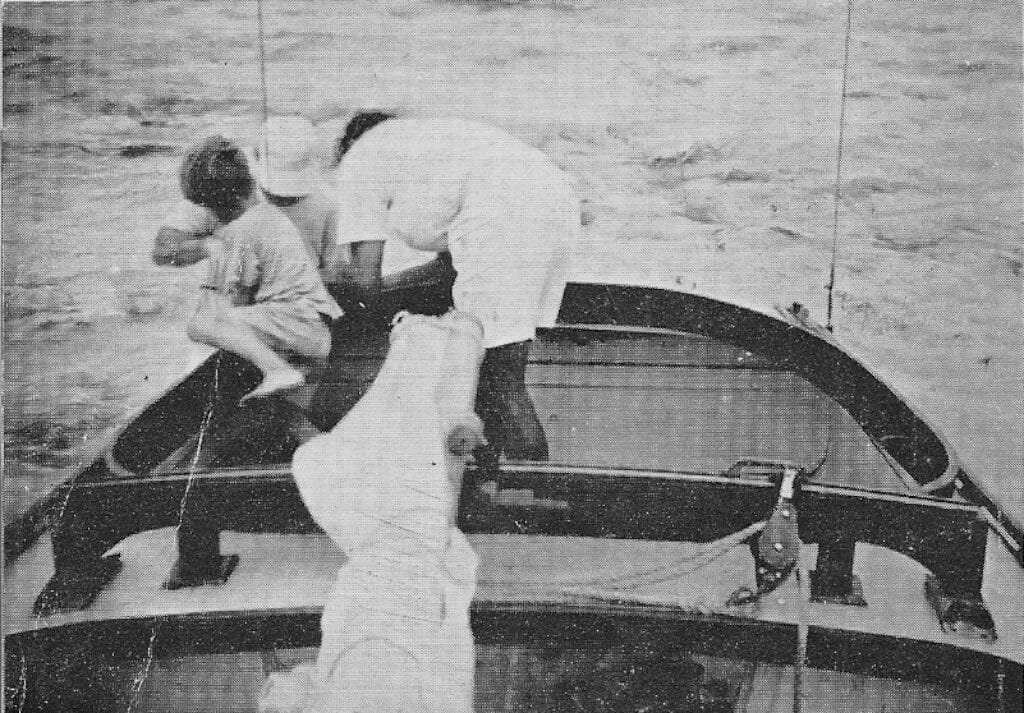
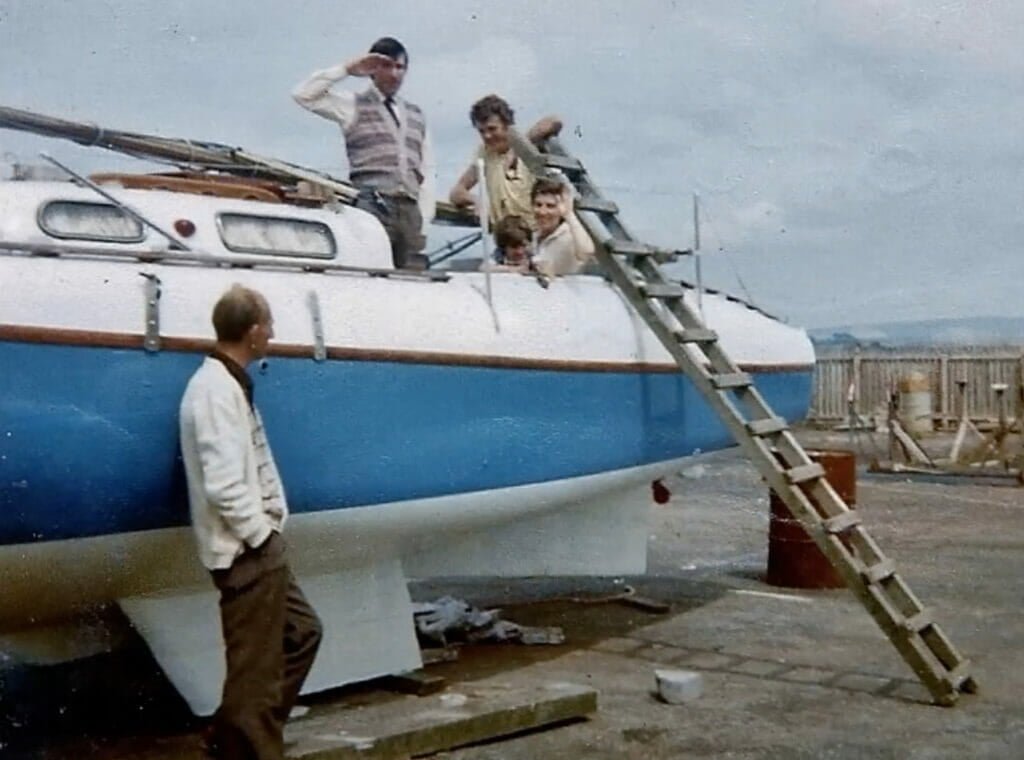
Gaff Rig
They think that gaff rig might give us the chance to combine all of the rig ideas above – better light airs performance, use of Dyneema and carbon fibre spars for lightness, loads of challenge and char- acter! They suggest starting with a three-quarter rig and think the same mast and stays could be used with both the original Bermudan sails and their gaff sail plan. They suggested an aluminium mast as the luff groove would be strong enough for the gaff to slide up and down in the groove. I would prefer a wooden mast but this would be difficult to use for both Bermudan and Gaff rigs. A carbon fibre mast with a luff groove would significantly reduce weight aloft but would be very expensive.
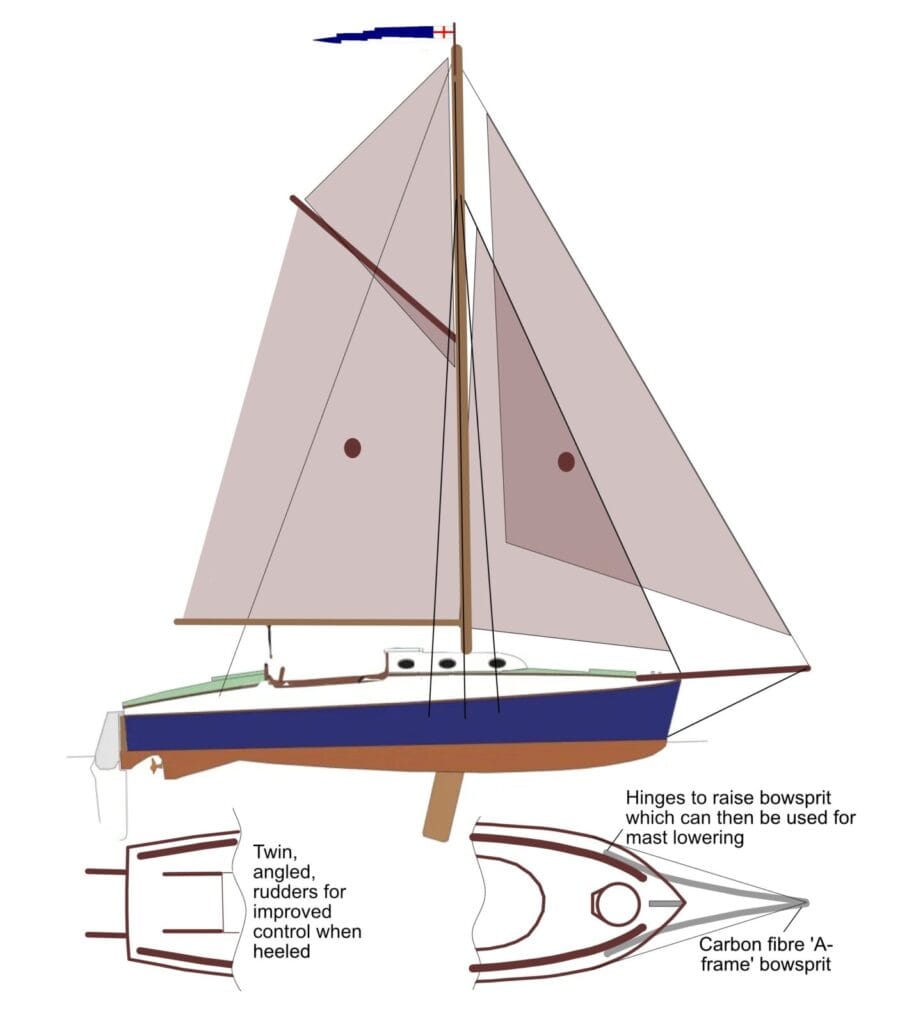
They think that gaff rig might give us the chance to combine all of the rig ideas above – better light airs performance, use of Dyneema and carbon fibre spars for lightness, loads of challenge and char- acter! They suggest starting with a three- quarter rig and think the same mast and stays could be used with both the original Bermudan sails and their gaff sail plan. They suggested an aluminium mast as the luff groove would be strong enough for the gaff to slide up and down in the groove. I would prefer a wooden mast but this would be difficult to use for both Bermudan and Gaff rigs. A carbon fibre mast with a luff groove would significantly reduce weight aloft but would be very expensive.
The lowers and forestay hounds for the Bermudan mast would be used for the staysail, set on the forestay to the bow, and a second stay would be fitted from the masthead to the end of the bowsprit. A custom masthead fitting would be required. Twin backstays would be fitted from the custom fitting and arranged with tackles at their lower end. These could be led to the existing chainplates on the transom for Bermudan rig. For the Gaff rig the tackles would enable them to work as ‘runners’ fitted to new chain plates on the curved decks just aft of the cockpit.
They proposed the bowsprit would be a lightweight ‘A-frame’ design with hinges where the legs attach to the forward curved deck on each bow. This would allow it to be raised to save fees in marinas. It could also be used in a raised position to pull up and lower the mast. Their initial sail plan suggests (Bermudan areas in brackets):
- Mainsail 178 sq.ft (155) Topsail 46 sq.ft
- Staysail 78 sq.ft (85-115) Yankee 126 sq.ft
The total of around 428 sq. is an increase of over 50% to the sail area for that light airs performance but they would want to do more work on relative sizes of main and head- sails to maintain balance. It might be that the boom and gaff will need to be reduced in length. Deciding on the best selection of sails and reefs for different conditions will re- quire some experimentation. The team also suggested thinking about using a boat with twin rudders to provide greater control when heeled and in strong winds given the large increase in sail area. And they had an idea to fit water ballast tanks outboard of the keelboxes which can be filled and emptied depending on conditions.
Junk Rig
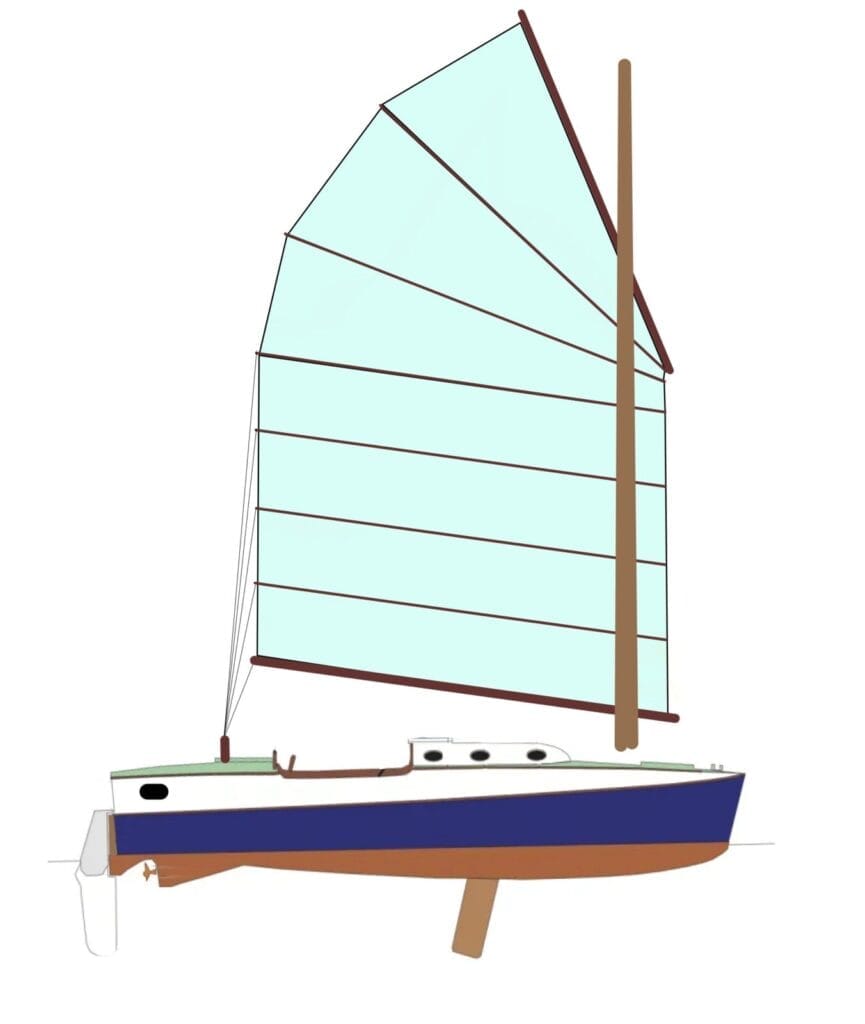
Although not part of the brief the FAERY team decided to also evaluate Junk rig. The un-stayed mast of the Junk would mean structural alterations. The mast would be positioned just after of the forepeak bulkhead and would require a carbon fibre ‘space frame’ to spread the rig loads into the structure and skin in that area. They noted that these alterations would fly in the face of one of the cleverest design features – the concentration of mast and keel stresses around the sloping bulk- head. They would also require work to deal with the trim change from moving the mast forward.

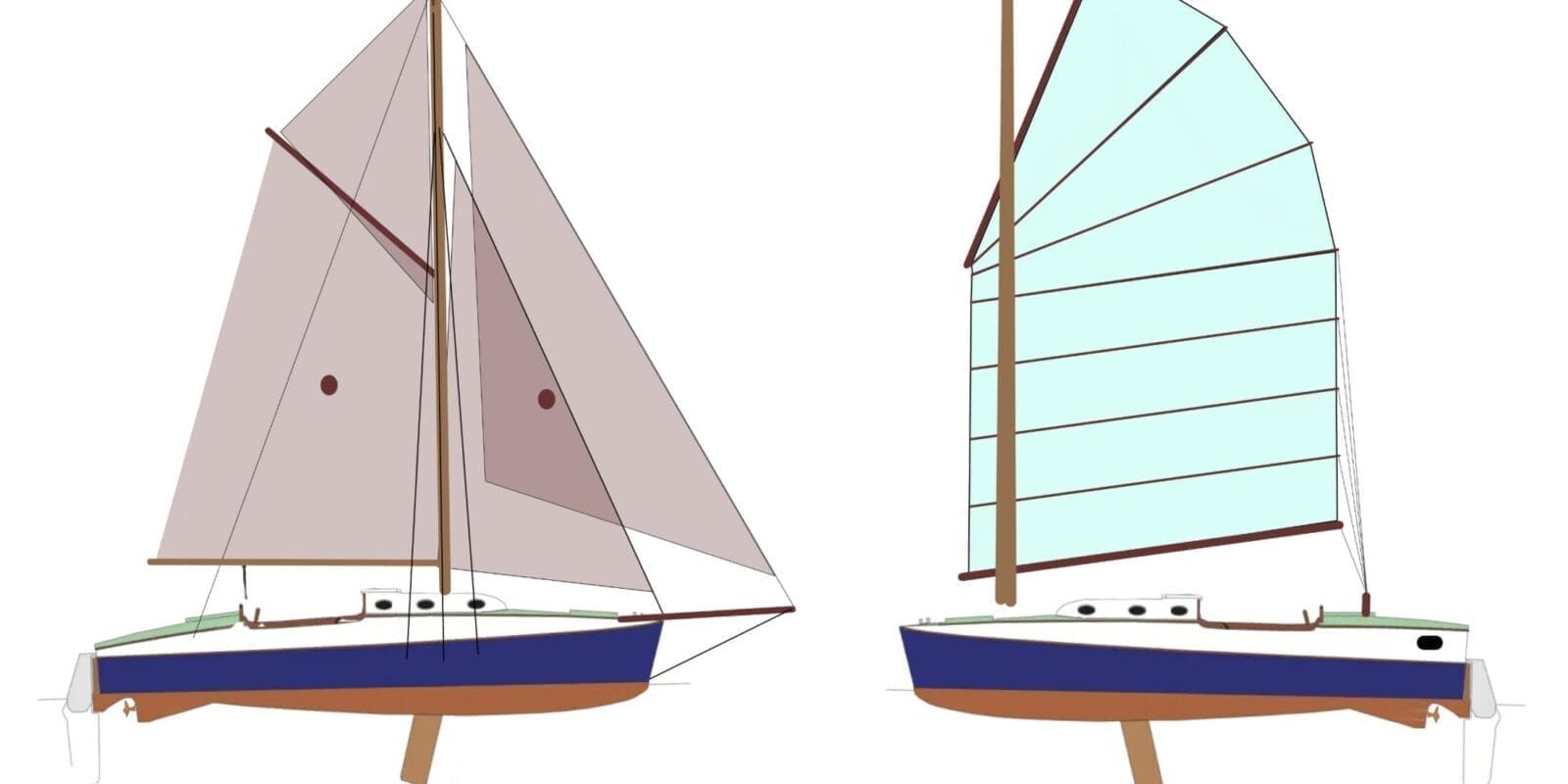
As a thought experiment, consideration of different rigs for the Atalanta is certainly engaging. But in practice, I can’t see why one would take one of the relatively few remaining examples of a classic British yacht and try to make is to do/be something it was never designed do/be. If you want a performance yacht, start with one designed and constructed to perform. Or maybe I am missing something?
An interesting provocation! to look different” – there have been decades, possibly centuries, of people pimping their vehicles. Hot rod Ford Populars, spoilers and wide tyres on MX5s, Rococo pillars on porches for 1930s houses, ……
Perhaps an element of sense too, although we shouldn’t under-estimate the importance of thought experiments! And is your challenge to see the problem from only one practical dimension. Are there others?
“Its the boat I’ve got” – messing experimenting with what we have is potentially cheaper than trying to swap for the ‘off the shelf’ solution, particularly if we aren’t sure exactly what solution we want?
“I wonder what it can do?” – even Fairey Marine would have been interested in the possibilities that new technologies, materials and understanding bring.
“I want my
“I wonder if …”
The Gunter rig (as A80 ) is a proven alternative for the Atalanta – there is an PBO article about her which can be found online – and the Gunter would also seem the least difficult to adapt from the standard Atalanta rig . [Also see this post https://atalantaowners.org/a80-sails-extensively-with-gunter-rig/] It also has the advantage of easier mast lowering / raising and reduced standing rigging, which may appeal to Broads fans etc.
The unstayed Junk rig has attractions, but as pointed-out by Nick in the Bulletin article, providing support for the unstayed mast aft of the forward bulkhead is the tricky part and would require much modification.; the Keel-stepped mast would require re-engineering the deck with a gasket /gland; the intrusion of the mast base would limit access to the fo’c’sle and dropping the mast would be a crane job. An interesting idea for a project – not sure what Uffa and Alan Vines would think though.
I was definitely considering the retractable bowsprit and lightweight genoa.
Mary is 3/4 rig so running a line to top of the mast to a bowsprit would be parallel to the existing forestay. This is suitable for the Med where I spent days chasing zephyrs. But caught out in a gust it could do significant damage.
I would consider a carbon fibre mast and rigging mostly because this would store more easily, be lighter and probably stand the strain of a large genoa.
With twin rudders the centre propeller has more disruption of the water flow. I see A146 has an outboard. But I will stick to this compromise it works. Maybe if I ever get rich I will buy a folding prop.
One more for the wish list.. the keel boxes could be extended for 8 to 9’ of draft!!
With a re-jig of the keel shape and lead you could possibly get twice the righting moment with the same weight.
David
I thought about this, not in any real sense but in a kind of daydream. I agree the keels are a significant contribution to the weight. Adding lightness might be a worthy goal.
If I was to consider this I would consider going with a dagger board design and bulb ends and lightweight blade. You would loose cabin room but the height would allow for this and modern hydrolics would help. Just don’t hit anything 🙂
But ultimately I would be interested if the hull design is the limitation and whether adding lightness would allow you to get up on the plane?
Also spotted this, it’s an old design but somewhere in the middle of an old gaff, modern square top and junk rig.. tempting but I will probably stick with a conventional Bermudan main and ope the extra fore sail area helps in light winds.
David
I was also considering a bow spirit for a cutter rig and bigger asymmetrical kite.
David